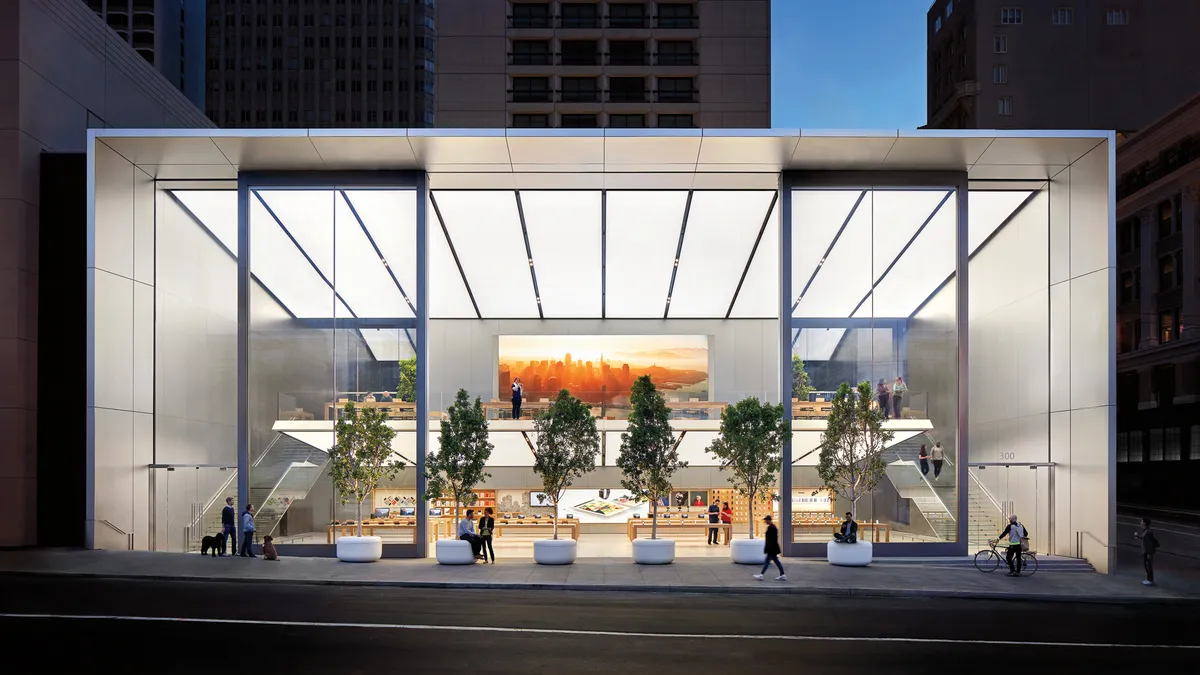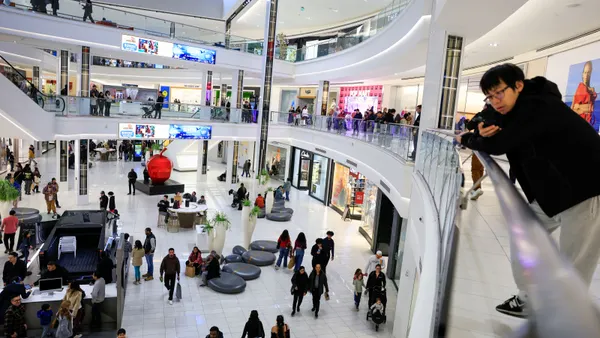Dive Brief:
-
Sales per square foot at most retailers have declined in recent years, down from almost $375 in the early part of the 21st century to $325, according to research from CoStar, according to a press release.
-
The foremost retailer in sales per square foot is Apple, which according to CoStar managed $5,546 per square foot, a measure that could be boosted by the “next milestone iteration” of the company’s iconic iPhone, which CoStar said could produce Apple's strongest sales to date. Tiffany & Co. leads the jewelry category with sales of $2,951 per square foot.
-
When it comes to apparel, Lululemon Athletica sees sales of $1,560 per square foot, in its 406 company-operated stores under the Lululemon and ivivva brands, CoStar said.
Dive Insight:
While Amazon has been disrupting legacy brick-and-mortar stores, driving down sales per square foot, many continue to thrive. One antidote for brick-and-mortar's can be found at the retailers hailed by CoStar as having the highest sales per square foot: Apple's stellar customer service and Lululemon's in-store experience, which includes community-based activities like yoga classes that fit in well with the brand's message, account for much of these retailers' success.
It isn’t just Amazon or e-commerce, however, that is dragging down the sales-per-square foot metric — its also an over-abundance of stores. Many retailers, most notably Macy’s, expanded their store fleets beyond what could be supported in any era. The Great Recession helped accelerate a natural correction, experts say. Last year, retail analyst Jan Kniffen, CEO of J. Rogers Kniffen Worldwide Enterprises, said that while America at the time had about 1,100 enclosed malls, that number should be around 700 — meaning that roughly a third are destined to close.
Which stores to close can be a tricky decision, though, because of how offline stores add to online sales. Moody's Investors Service last year warned that closing a physical location reduces a retailer’s presence in the market area and noted that online sales often decrease in zip codes surrounding a shuttered store. It behooves mall landlords and retailers to leverage new technologies and new math to account for that, in order to make educated decisions, according to Hongwei Liu, CEO and co-founder of Mappedin, an indoor wayfinding platform for premium North American malls.
"Fortress mall operators are under heavy scrutiny, along with the rest of their industry," he told Retail Dive in an email. "Everyone knows retail space is overbuilt in the U.S., shares are down 35% from a year ago. Our mall customers, who are almost exclusively premium operators, say that 'rents are up, sales are up, occupancy is up' in 2017. Flush with cash but seeing depressed market valuations, hostile takeover bids are increasing. Anecdotally, more is being invested in technology and consumer experiences to 'recapture' (or re-demonstrate) the value that premium malls and retailers are creating."















